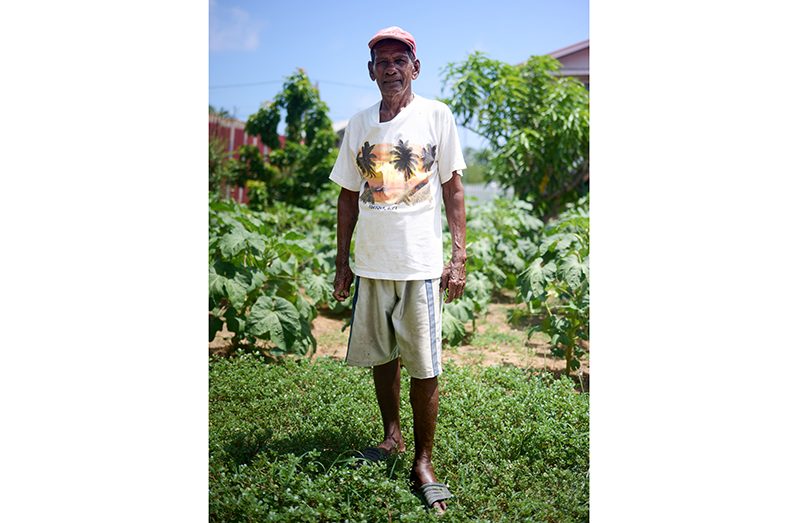A QUICK walk through the community of Mahaica would showcase the true expanse of the village’s agricultural heritage. Home to an estimated eleven thousand people, Mahaica is seemingly encased in green scenery. The area known as Mahaica is comprised of a few communities; these villages have done plenty in shaping the agricultural sector in the region. Historically, Mahaica was a primary player in the advancement of farming.
Today, the village has reached newer, inclusive and diverse heights. Mahaica has managed to break a mould that many villages have failed to. Farming is still alive and well in the community, but people have also taken up various professions. Mahaica is a village encapsulated with all the quaint simplicities of life while being reminiscent of a township.
The history of Agriculture
Throughout the village, there are countless people who have kitchen gardens, cash crops, and the more ambitious have vast rice fields. To most of the population, agriculture has long been a constant in their life; it has survived to become a part of the community’s culture.
This is true, especially amongst the older folks. Neville Ragashoosein has lived in Mahaica all his life, and agriculture has been a part of life for as long as he can remember. Today, the village has struck an amazing balance between keeping authentic agriculture alive amidst major societal changes. There was a time, however, when Mahaica was, by all definitions, a farming community at its best.

Mahaica’s agricultural past is greatly intertwined with Guyanese agriculture at large. The village’s green beginnings took shape in 1738 when the Dutch Governor of Essequibo introduced rice to supplement the diet of slave labourers on sugarcane estates. Some years later, in 1896, Guyana began producing more rice than it needed for local consumption, and the first export shipment to Trinidad took place that same year.
In 1952, however, the British Guiana Rice Development Company was established and named the Rice Development Company in 1966. The company operates a farm and rice factory at Mahaica/Abary.
In 1998, the Mahaica Mahaicony Abary Agriculture Development Authority Act was passed. In the years since then, agriculture has developed to become one of Guyana’s greatest gifts.
Every day Agriculture
Neville, one of Mahaica’s many farmers, was born and raised in the community of Good Hope. Today, at the age of seventy-five, Neville is retired and lives a humble life in the village of his birth. Mahaica is an amazingly diverse community, one where newcomers have been said to blend exceptionally well with the original villagers. According to Neville, life in Mahaica is as peaceful as one may expect, with the welcoming nature of its people.
Neville grew up among these beautiful and hardworking people. When asked about his Mahaica upbringing, he stated, “Growing up was okay. Not too bad, I have no complaints.” The people of Mahaica seem to have a mentality as peaceful as their scenery.
Mahaica has also given rise to generations of professionals. Neville himself had a very exciting job, surveying. Although much of the work done is tedious, Neville explained that his job gave him an opportunity that many people would be fortunate to have: the opportunity to travel. As a fresh-faced young Mahaican, surveying was not something Neville thought he would do.
He attended school in and around the community and later ventured to the Guyana Technical Institute. This, he says, was where he learned the skills that would take him to the edge of Guyana’s borders. Neville shared that, “I went to GTI in Georgetown. I learned surveying and well, with survey work I had to go all over the place.”
Most Guyanese are well aware of the great expanse of our captivating country, but very few have had the chance to truly explore our nation. Neville describes Guyana as a beautiful country, from coast to coast and throughout every corner. Neville recalls a few memorable places that brought him even more memorable experiences. He shared that, “I would say I travelled actually the whole interior.
I have been to Kamarang, and plenty of other places.” Neville said that in his more than three decades of working, he saw a lot of Guyana and learned more about the country. Among the most memorable are the indigenous communities he visited there he said he met different people and learned a lot about different cultures.
These experiences made Neville’s return to Mahaica even more momentous. Several years ago, Neville retired after a long, well-spent career. Today, he leads a simple life in the village of Good Hope, Mahaica. Although he has seen the vastness of Guyana, Neville has returned to Guyana to take up the occupation of his fore-parents, agriculture. He took the Pepperpot Magazine to his plot of land that he calls a kitchen garden, but it is far more reminiscent of a grand agricultural endeavour.
Agriculture seems to have a profound connection to the human spirit in many ways. As Neville explains, farming is what he does and would do regardless of where he goes because it is among the few things he has always known.


.jpg)











